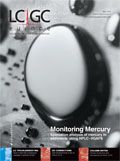Event News: Euroanalysis 2013
Euroanalysis 2013
The 17th European Conference on Analytical Chemistry: Euroanalysis will take place from 25—29 August 2013 at the Warsaw University of Technology in Warsaw, Poland.
The Warsaw University of Technology — the oldest technical university in Poland — was founded in 1826 and is conveniently located in central Warsaw, well served by both road links and public transport.

Euroanalysis aims to cover a broad spectrum of advances and improvements in analytical techniques in a diverse range of applications, including food, medicine, environmental, pharmaceutical and cultural heritage. A selection of the main topics to be discussed include: bioanalytical and electroanalytical chemistry; sample preparation and separation techniques; spectroanalytical techniques; micro- and nanoanalytics; biosensors and chemosensors; hyphenated techniques; analytical instrumentation development; and modern tools in teaching analytical chemistry.
Euroanalysis allows the dissemination of knowledge concerning modern analytical approaches and important techniques used in analytical control, as well as solving the challenging problems in life science applications. including genomics, proteomics and speciation analysis. The congress aims to create new links between scientists from different countries with different interests and allow young scientists to find new ideas and opportunities and meet prominent scientists from expert laboratories.
A number of guest speakers have been invited to give plenary lectures, including: Damia Barcelo, Chemical and Environmental Research Institute of Barcelona (CSIC) (Spain); Adam Hulanicki, Warsaw University (Poland); Roman Kaliszan, Medical University of Gdansk (Poland); Thomas Laurell, Medical and Chemical Microsensors, Lund University (Sweden); Mikhail Proskurnin, Moscow State University (Russia); Otto Wolfbeis, University of Regensburg, Institute of Analytical Chemistry, Chemo- and Biosensors, (Germany); and Juergen Popp — 2013 Robert Kellner Lecture awardee. Plenary sessions will be held in the Great Hall of the main building of the Warsaw University of Technology.
Presentations submitted as keynote lectures will be evaluated by external reviewers, and the decision of whether accepted oral presentations are nominated as keynote lectures will be decided by the scientific committee.
A key feature of the conference will be the award of the Polish Chemical Society Prize to an outstanding oral presentation. This will be awarded to an author who demonstrates excellence in the presentation of scientific achievements in the field of separation techniques. There are also three prizes (vouchers for Springer books) for the best poster presentations.
The organizers of Euroanalysis will sponsor several scholarships to attend the conference. Applicants must be Ph.D. candidates or academic post-docs, with a preference given to candidates studying at institutions in Europe.
Important deadlines include 15 May 2013 (abstract submission), 15 June 2013 (notification of abstract acceptance) and 15 July 2013 (early bird registration fee).
Website: www.euroanalysis2013.pl
E-mail: secretariat@euroanalysis2013.pl
6–20 June 2013
HPLC2013 Amsterdam
Amsterdam RAI Conference Centre, Amsterdam, The Netherlands
Co-chairs: Peter Schoenmakers and Wim Kok
E-mail: hplc2013@caos.nl
Website: www.hplc2013.org
1–4 July 2013
9th Annual Conference of the Metabolomics Society
Scottish Exhibition and Conference Centre (SECC), Glasgow, Scotland, UK
Organizers: Metabolomics Society
Tel: +44 (0)131 339 9235
Fax: +44 (0) 131 339 9798
E-mail: metabolomics@in-conference.org.uk
Website: www.metabolomics2013.org
17–18 September 2013
3rd European GC×GC Symposium
Parc Valrose, Nice, France
Organizers: LECO
Tel: +49 2166 687 305
E-mail: birgit.zahel@leco.de
Website: http://www.leco.com/component/edocman/?task=document.viewdoc&id=1160&Itemid=0
25–28 September 2013
19th International Symposium on Separation Sciences
Porec, Croatia
Organizers: Croatian Society of Chemical Engineers
Tel: +385 1 4872 499
Fax: +385 1 4872 499
E-mail: hdki@zg.t-com.hr
Website: http://pierre.fkit.hr/hdki/isss/index.html
6–9 October 2013
ITP2013
Hotel Beatriz Atlantis & Spa, Tenerife, Canary Islands, Spain
Organizers: Spanish National Research Council and the University La Laguna
Tel: +34 922 318990
Fax: +34 922 318003
E-mail: itp2013@ull.es
Website: www.itp2013.ull.es

HPLC 2025 Preview: Fundamentally Speaking (Part 1)
May 13th 2025Michael Lämmerhofer from the Institute of Pharmaceutical Sciences, University of Tübingen, Germany, spoke to JFK Huber Lecture Award winner of 2024 Torgny Fornstedt, professor in analytical chemistry and leader of the Fundamental Separation Science Group, Karlstad University, Sweden, about his pioneering work in high performance liquid chromatography (HPLC) with a focus on fundamentals and industrial applications.
Reversed-Phases for LC Deliberately Doped with Positive Charge: Tips and Tricks for Effective Use
May 13th 2025In this month's edition of LC Troubleshooting, Dwight Stoll and his fellow researchers discuss both the benefits (improved peak shape/loading) and challenges (excessive interaction) associated with charge-doped reversed-phase (RP) columns for both analytical and preparative separations.
Determining Ways to Protect Honeybee Colonies with GC–MS
May 13th 2025A study conducted by the Agriculture Research Centre of Giza, Egypt, and Jilin Agricultural University in China, evaluated the efficacy of stinging nettle extract, nettle smoke, and formic acid in the controlling of Varroa mites, a major threat to honeybee colonies, with a focus on mite infestation reduction, honeybee mortality, and biochemical responses. Gas chromatography–mass spectrometry (GC–MS) was used to identify key bioactive compounds in the stinging nettle extract.

.png&w=3840&q=75)

.png&w=3840&q=75)



.png&w=3840&q=75)



.png&w=3840&q=75)









